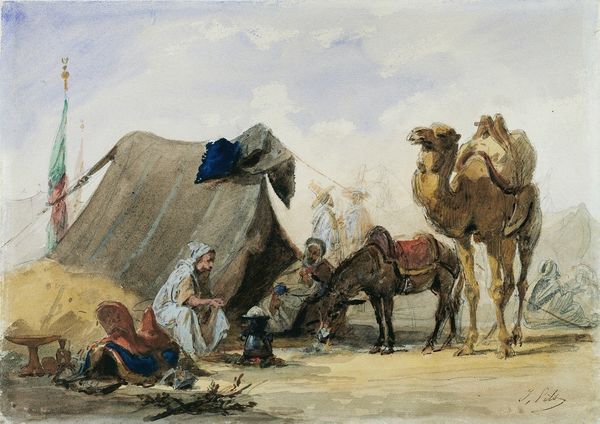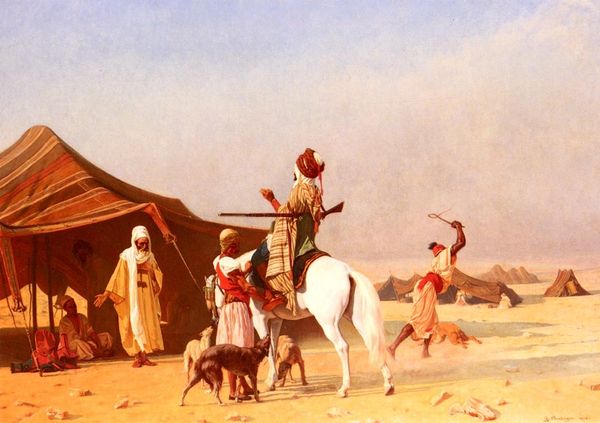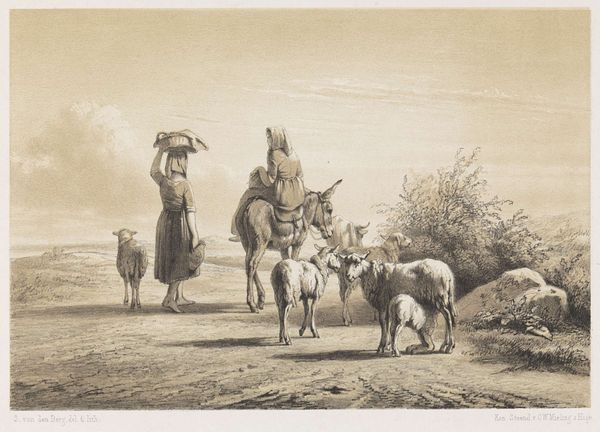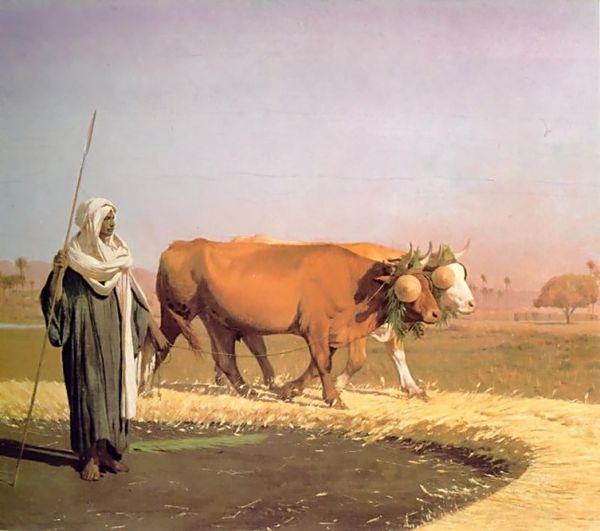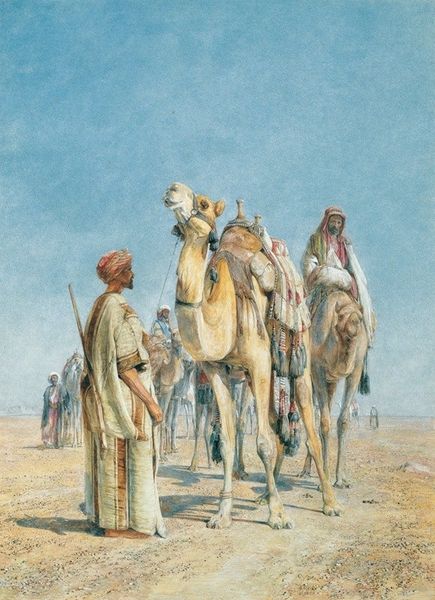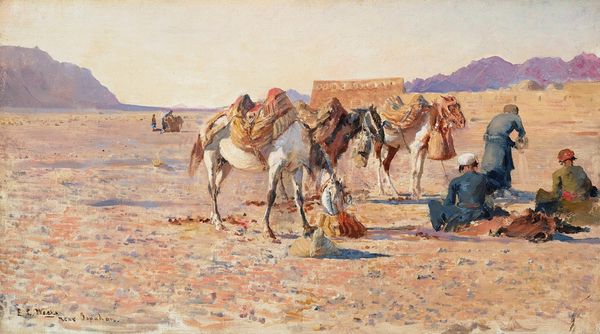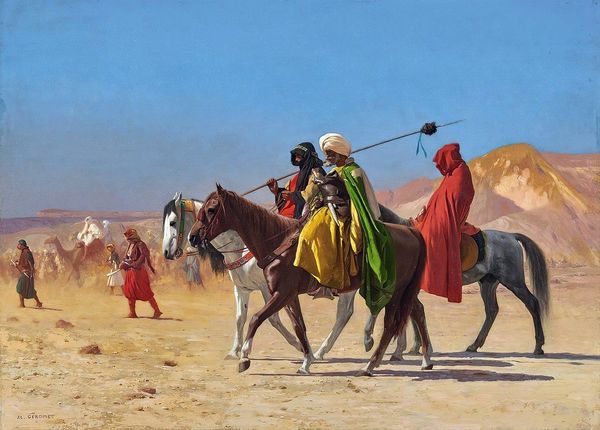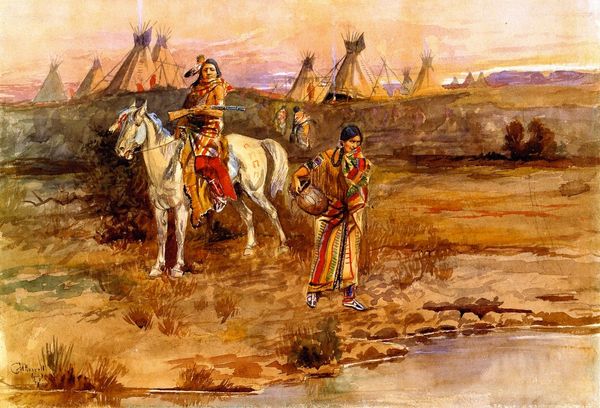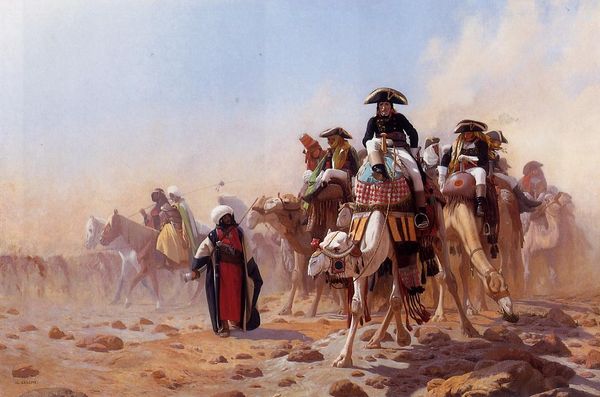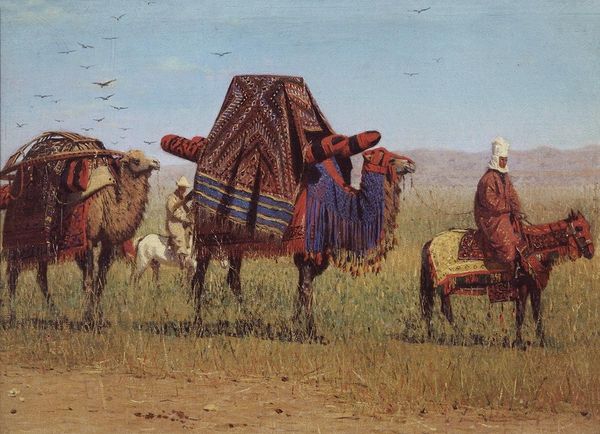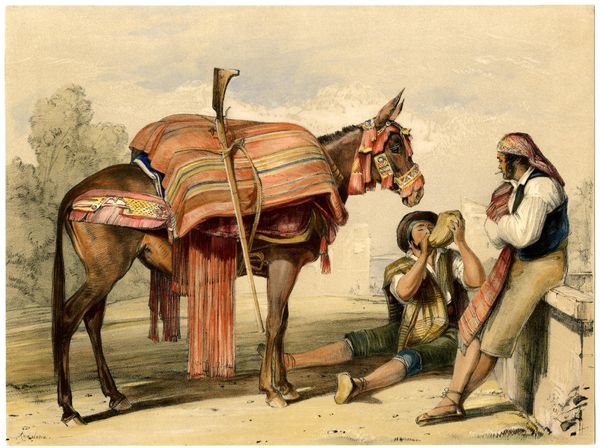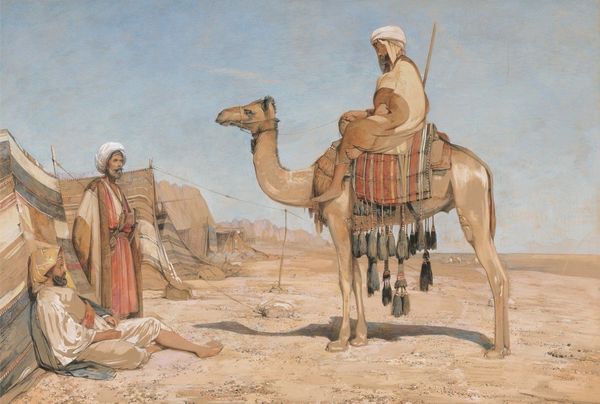
painting, oil-paint
#
animal
#
painting
#
oil-paint
#
landscape
#
oil painting
#
orientalism
#
islamic-art
#
genre-painting
#
academic-art
#
realism
Copyright: Public domain
Curator: This painting, entitled "Camels at the Fountain," immediately evokes for me a sense of weary animals pausing for a vital moment of respite in a seemingly endless journey. The muted tones and almost hazy atmosphere add to the feeling of both serenity and the harsh realities of the desert. Editor: It's certainly a study in materiality. The heavy saddles, the worn hides of the camels, the very texture of the stone trough, all speak to a specific kind of labor and its connection to both human and animal survival. Curator: Absolutely. Painted in the style of Orientalism, we can see this artwork through the lens of postcolonial theory and its impact on representation and identity. How did European artists such as Jean-Léon Gérôme exoticize the East and appropriate these cultures into the artistic canon of Europe? We must question the authority of Western viewpoints on cultures viewed as the ‘other.’ Editor: But shouldn't we also focus on the craft? The skill involved in capturing light on the camel's coat, and on the worn texture of the stone basin? This suggests not just a surface-level gaze, but a material engagement. What can we say of the use of oil-paint that could render such tactile and textural experience? It's important to understand the techniques used, in order to gain more perspective to a nuanced socio-political stance. Curator: Yes, we can also talk about that by looking at the canvas, oil paint as a commodity available within a capitalist system; these artworks contribute towards solidifying hierarchies of race and class. By studying its aesthetic impact, we can unveil how social narratives are both promoted and normalized. How do paintings contribute in reinforcing specific power structures in its production? Editor: I suppose, thinking about the materials involved in creating these pieces alongside what it portrays pushes back at traditional boundaries of labor, but moreover I'd wonder—What kind of market existed to foster paintings like this, where orientalist scenes served a specific function in shaping and satisfying certain consumers' vision of foreign places? It is interesting to imagine this exchange that takes place beyond the mere strokes of paint. Curator: Analyzing “Camels at the Fountain" provokes thoughtful dialogue about the complexities within its frame, about both the artist and the consumer, pushing to reveal difficult but crucial considerations surrounding its social, historical implications and meaning of visuality. Editor: I think in examining how paintings are made—the literal building of layers—reveals their profound link to consumerist narratives and colonial power, it enables us to see that the surface can often hide the underlaying framework.
Comments
No comments
Be the first to comment and join the conversation on the ultimate creative platform.
